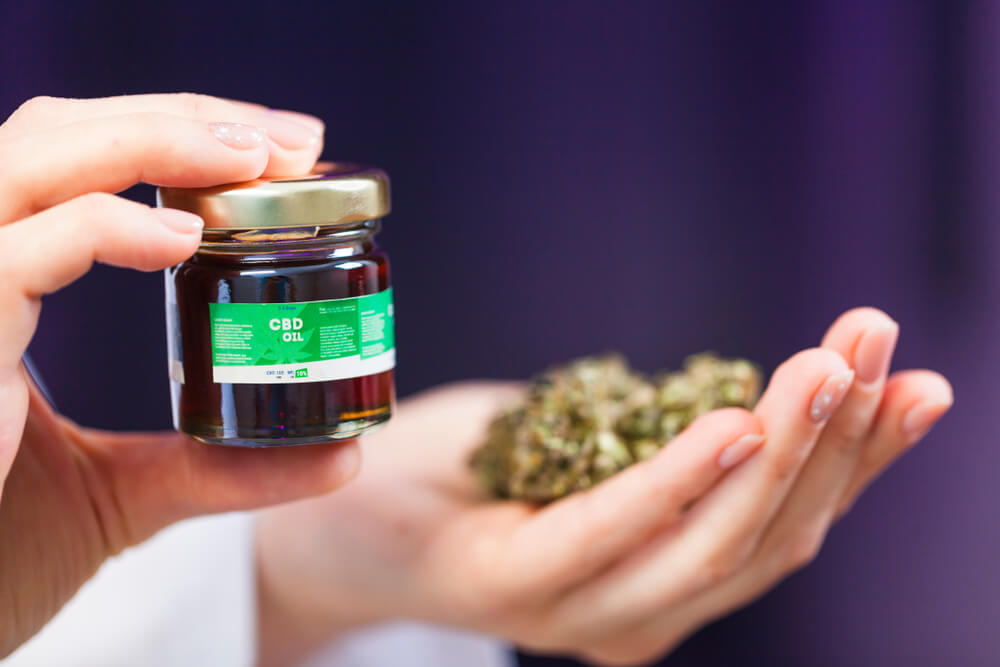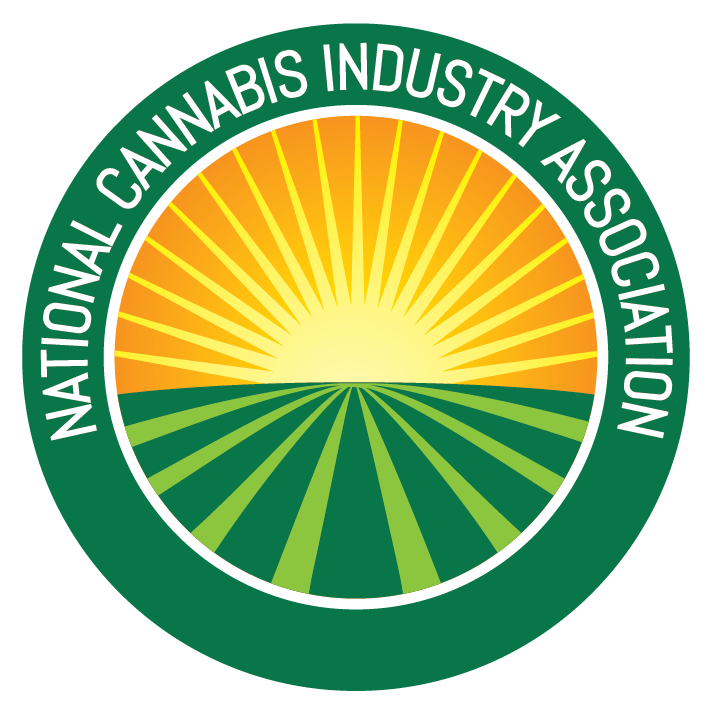Member Blog: Trials and Tribulations – Compliance for Banking

by Nicole Perry, DartBank
There are not a lot of financial institutions out there that support cannabis, so finding the right one is important. What is also important is to understand the ‘why’ behind what they are asking. Opening a cannabis bank account is not as easy as opening a traditional business bank account. With cannabis being federally illegal, banks, and credit unions must adhere to the rules and regulations set forth by our regulators, also tying in the respective state that the cannabis business is operating in.
An initial phone call is often set up for the financial institution to learn more about the cannabis business, its owners, and signers. Knowing when the business will be operational and what their big picture looks like is fundamentally important. Questions could be asked about ownership, location, growth, licenses, and compliance. Some products and services are not fully available to the cannabis industry, because other players have not fully opted in (i.e., merchant processing and debit/credit cards). This makes the financial institution banking cannabis able to create a product suite that they feel comfortable with from a risk and compliance standpoint. Pricing out cannabis bank accounts is also something that differs from the traditional businesses being banked.
Again, not every financial institution will support cannabis, and that is because it is expensive. It is expensive because those that support the industry have had to seek guidance from consultants, their respective regulator, their state, their local cannabis groups and associations and their board of directors. The initial onboarding of a cannabis customer, after pricing is accepted, takes longer as well. Background and credit checks, as well as risk reviews need to be completed at most financial institutions, along with an initial onsite audit visit.
It is widely understood that cannabis businesses must go through an inspection with their operating state before they are licensed, however, financial institutions are still required to make sure they know what they are working with. Most financial institutions work closely with their compliance/BSA teams to develop risk profiles so that if questions are asked of them during an audit, they can answer to the best of their knowledge the transactions that are occurring and then prove that we understand what the cannabis businesses are using their accounts for. Many financial institutions have implemented the use of compliance software that allows their cannabis departments to review transactions, seed-to-sale monitoring, monitor licensing, insurance, onsite visits, and financial changes. METRC and Bio Track are the two main seed-to-sale tracking systems used throughout the United States. Most states have adopted using one or the other and few have implemented their own manual tracking.
The seed-to-sale system your financial institution chooses to work with can integrate with your respective state’s seed-to-sale tracking system for financial institutions to monitor account transactions and seed-to-sale flow. It is common to have your financial institution reach out to you once you have been onboarded to integrate your API key (QR code that houses your cannabis licenses) into their respective compliance software to initialize the tracking component. Directly after this, the designated person at the cannabis business or CPA (to be determined by the cannabis business) will be asked to upload your financials into the compliance software monthly for tracking purposes. These systems correlate with most POS systems as well as QuickBooks for a seamless flow. Financial Institutions are often asked by cannabis businesses if this is something they can do in-house or if they can utilize an outside CPA firm to help. The answer is yes to both. It takes minimal time each month to upload your financials so doing it yourself is certainly feasible, however, there are many CPA firms out there who will do it for you, along with making sure your numbers make sense and your taxes are accounted for. Not to mention, the annual CPA attestation as well.
Financial institutions are not asking you to do this to make your life difficult. It is simply because this is a new industry, one that is federally illegal at that, and verifying information to better understand how the industry works only helps to normalize it. It is also common for your financial institution to ask for invoices to accompany transactions such as wires, ACH, bill pay, checks, cash deposits, etc. We do this because auditors also ask us if we can, in fact, verify we know what this transaction was for and to whom the funds went. It also helps with fraud surveillance. Most financial institutions have experts in fraud or compliance who can help deter this from happening to you and your business.
We have come a long way since inception and have learned a lot over the years. What is important to know is we are all a team. The cannabis business and the financial institution are working together to understand how they both complement each other. Together we are building the cannabis industry, so that one day, when it is stabilized and normalized, we can take that with us for the next big thing. Every industry out there was new at one point and had to go through the same trials and tribulations, and while most of us cannot remember or have never been a part of the ‘build out,’ it did happen at some point. When your financial institution asks you for something related to transactions or business, please understand that it is for the better of the industry.
We can work together to normalize and strengthen this industry. All the steps we are taking are learning opportunities. I believe everyone can say at one point they did not know how to do something, but through training, education, and a road map, we were able to develop a routine so that as we grew at understanding something we had not understood before, it became normal.
 Nicole Perry has been with Dart Bank since 2016 as the Office Manager and most recently VP/Senior Treasury Management Officer. She brings with her 20 years of financial services experience. Prior to joining Dart Bank, she worked for various financial institutions holding many different roles, specializing in business banking.
Nicole Perry has been with Dart Bank since 2016 as the Office Manager and most recently VP/Senior Treasury Management Officer. She brings with her 20 years of financial services experience. Prior to joining Dart Bank, she worked for various financial institutions holding many different roles, specializing in business banking.
Nicole is an alumna of the Lansing Chamber of Commerce’s Lansing Leadership 2018 class and is part of the Perry School of Banking class of 2020. She received her Bachelor of Arts in Business Management with an emphasis in Human Resources from Davenport University and attended Central Michigan University for her Master of Science degree. In her spare time, Nicole enjoys attending Michigan State University football and basketball games and spending time with her family and friends at the lake.
Committee Blog: Opportunities & Challenges with Next Gen Packaging In the Legal Cannabis Market

by NCIA’s Packaging and Labeling Committee/ Next-Gen Sub-Committee
Lisa Hansen, Plaid Cannabiz Marketing & Brian Smith, Satori Wellness
What Is Next Gen, Anyway?!
It’s a new year, a new decade and quite frankly—a new era of packaging in the cannabis industry. We are officially face-to-face with next gen packaging in our ever-growing market. But what is next gen packaging, anyway? By definition, next-generation packaging is “basically a packaging technology, which possesses different advanced features, such as traceability, offers various benefits such as product shelf life extension and provides product quality information.”
Essentially, it’s taking our cannabis packaging to the next level.
The Growing Opportunities
With new products, formats, and technologies available, the opportunities for next gen cannabis packaging are limitless. In fact, there are so many options for next gen technologies that our NCIA Packaging and Labeling Committee has organized a subcommittee that is dedicated to the topic. We’ve also created subcommittees for Sustainability, Honesty in Labeling and Intellectual Property and Protection. A new era for packaging indeed!
Today’s cannabis cosumers are supporting the legal market for its quality and transparency, and today’s cannabis retailers need accessible platforms to educate them. These dynamics create an environment where next gen packaging (and merchandising) can really shine. With these new tools, brands can immediately engage, inform, and incite action.
Dreams Vs. Reality
While our hopes are super high for next gen cannabis packaging, the reality can be a bit of a buzzkill. In a state-by-state market, the variables for packaging create an inherently significant expense. And with regulations frequently shifting, it makes investing in premium packaging challenging, to say the least. There’s also the complication of managing data and actions behind a next gen platform. Worth the effort? We sure think so. And the good news is that next gen packaging is designed to be measurable so there’s data to evaluate its impact.
Promising Examples
The applications of next gen packaging for cannabis are seemingly limitless. Everything from a simple QR code, to complicated anti-counterfeiting technology, are possible. Augmented and virtual reality, scratch and sniff add ons, and improved breathability all present powerful opportunities to quickly and effectively affect a purchase decision.
KURZ is really pushing the boundaries of cannabis packaging with value-added security and technology solutions that are not only effective but purposefully decorative. Think holograms on packaging that can be used for anti-counterfeiting and other special finishes that add pop but are also sustainably produced. Now we’re talking next gen!
BUNDLAR is getting ahead of the curve with what they call “AR made Easy.” By making aspects of AR technology publicly available as well as offering customization, brands can more easily experiment with this exciting new platform.
The strategic approach to structural design that Greenlane is taking and the inspiring steps SANA Packaging has made with hemp-based materials are other compelling examples of the momentum in next gen packaging. Perhaps the most promising example of all is that as an industry, we’re just getting started.
New Decade, New Attitude
Our subcommittee predicts more exploration in cannabis with packaging that covers the exciting world of next gen possibilities in this new 2020 era and beyond. Which brands will step up? Will retailers ask for it? Will consumers pay for the experience? In an industry that refuses to stand still, these questions will inevitably be answered. The Packaging and Labeling Committee will be watching and sharing more examples and insights in additional articles.
Are you using next gen packaging? Drop a comment and share your experience!
Member Blog: There’s No Place Like CBD For The Holidays

by Gary Paulin, Lightning Labels
While April 20th, or “420” is the “high” holiday of cannabis, did you know there are a variety of lesser-known CBD-related holidays throughout the year that can be great grist for the promotional mill? To achieve notoriety and engagement, CBD purveyors may want to include lesser-known celebrations into their annual marketing calendar.
For example, there’s National CBD Month in January, National Hemp Day February 4, National Hemp Month in July, Oils and Concentrates Day July 10 (sometimes referred to as 710 because OIL upside down resembles the number), National CBD Day August 8 and National Pet CBD Month in October.
And let’s not forget Jack Herer’s (The Hemperor’s) birthday celebrated June 18. According to Wikipedia, the devoted cannabis rights activist and author promoted cannabis and hemp for decades. His book, “The Emperor Wears No Clothes” has been in print for three-plus decades. Herer was “frequently cited in efforts to decriminalize and legalize cannabis… Herer also founded and served as the director of the organization Help End Marijuana Prohibition (HEMP).”
CBD purveyors wanting to get even more innovative can use their branding — including labels — to tie to lesser-known holiday promotions. Here are some ways to use labels as powerful promotional tools in conjunction with “holiday” celebrations:
- Extend their reach for a whole year via extended content labels (ECLs). For CBD purveyors committing to promotions tied to a calendar of holidays, ECLs can be a fun and impactful way to present information, offers and calls to action.
- Create a major promotion around one celebration (e.g., January’s National CBD Month), and use ECLs to explain/inform. This could be a contest with details, one or more discount offers, or even a history of the CBD “movement.”
- Print specific labels for each holiday. For example, create fun and informative labels around “The Hemperor’s” birthday month in June. A series of labels could detail various hemp-related accomplishments by Herer, even possibly going so far as to be small pieces of art depicting him and his life’s work.
- Use them to link to digital media. There’s always a case to be made for labels containing QR codes, URLs and other links to more information. This can be especially appropriate for surveys, reviews and other interactive platforms where consumer feedback is desired. Any of these efforts can be themed around holiday celebrations (e.g., an upcoming anniversary of hemp or CBD adoption/legalization). In the CBD world particularly, companies need to understand how their consumers view them, assess the quality of products and express any concerns that may emerge.
- Present labels as a quality control and consumer safety tool. At a time when buyers worry about the safety and authenticity of the products they consume, labels can help come to the rescue. And what better holiday than one which celebrates both the healthy effects of products and a concerted effort to protect those consuming them?
For example, new label technologies enable consumers to verify the authenticity of their products through a smartphone app that scans a small digital ID on the label. These track-and-trace digital IDs offer a powerful deterrent to counterfeiting, protecting consumers from harmful or ineffective fake products. In turn, CBD product manufacturers can demonstrate to customers that they are working actively to ensure their safety. That creates favorable word-of-mouth, goodwill and loyalty among buyers who will criticize or even pursue regulatory and legal remedies if they feel there’s a problem.
 Gary Paulin is Director of Sales and Client Services for Lightning Labels, a Denver-based label printer that has been offering state-of-the-art affordable, full-color custom labels and custom stickers of all shapes and sizes to cannabis purveyors for more than a decade. They offer many options for materials and laminates and special effects to achieve digital short-run requirements (50 minimum) on up to 15 million labels, plus Lightning fast delivery. For more information and to place orders online, visit LightningLabels.com. For the latest in packaging news and labeling promotional offers, find Lightning Labels on, Facebook, Instagram, Twitter (@LightningLabels), Pinterest, and LinkedIn.
Gary Paulin is Director of Sales and Client Services for Lightning Labels, a Denver-based label printer that has been offering state-of-the-art affordable, full-color custom labels and custom stickers of all shapes and sizes to cannabis purveyors for more than a decade. They offer many options for materials and laminates and special effects to achieve digital short-run requirements (50 minimum) on up to 15 million labels, plus Lightning fast delivery. For more information and to place orders online, visit LightningLabels.com. For the latest in packaging news and labeling promotional offers, find Lightning Labels on, Facebook, Instagram, Twitter (@LightningLabels), Pinterest, and LinkedIn.

 Nicole Perry has been with Dart Bank since 2016 as the Office Manager and most recently VP/Senior Treasury Management Officer. She brings with her 20 years of financial services experience. Prior to joining Dart Bank, she worked for various financial institutions holding many different roles, specializing in business banking.
Nicole Perry has been with Dart Bank since 2016 as the Office Manager and most recently VP/Senior Treasury Management Officer. She brings with her 20 years of financial services experience. Prior to joining Dart Bank, she worked for various financial institutions holding many different roles, specializing in business banking.


 Gary Paulin is Director of Sales and Client Services for Lightning Labels, a Denver-based label printer that has been offering state-of-the-art affordable, full-color
Gary Paulin is Director of Sales and Client Services for Lightning Labels, a Denver-based label printer that has been offering state-of-the-art affordable, full-color